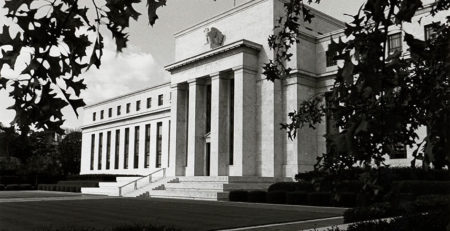Trends That Signal Stock Market Volatility
At the moment, it seems the Dow can do no wrong. After breaking 20,000 for the first time at the end of January, it’s been setting new records ever since, now nearing 21,000. But even as the market rises, it’s likely that it’s poised for a significant fall, and the months ahead may see a fair amount of volatility. How can you tell? There are a few trends to look for.
Higher Gold Prices
Gold and the stock market often have an inverse correlation. When the markets go down, gold goes up. This is because gold is one of the most reliable investment safe havens. People put money in gold to guard against losing their savings, should their investments in the markets go south. Thus, when the markets start to go down, more people turn to gold.
There’s a deeper pattern to it, though. When both gold prices and bond yields (another traditional safe haven) are on the rise, it’s a good indicator of an impending market crash. This happened before the 1973-74 crash, as well as before the 1987 crash. Both gold and bonds went up steadily for three straight quarters, before the market plummeted.
Higher Interest Rates
When both gold prices and interest rates are going up at the same time, it’s a sign of rising inflation. Higher interest rates tend to have a negative impact on the stock market, and if they continue to rise when the country’s not ready for it, it can lead to recession.
When the Fed raises the interest rate, it costs the banks and credit unions more to borrow from the government. They then pass that increase on to their customers, in the form of higher mortgage rates and credit card interest. This leaves consumers with less disposable income. Businesses suffer as a result, and stocks go down. Prices go up to make up for it, and the consumers, who are already struggling, find themselves in even dire financial straits. It becomes a vicious circle, where stocks continue to fall and prices continue to go up, until the economy fails.
Correlations
The Fed has, in fact, raised the interest rate several times in the last couple of years. From 2008 to 2015, it was near zero, to help the country recover from the economic crisis. But the Fed voted to raise the rate at the end of 2015, then again at the end of 2016, with the promise of up to three more rate hikes in the coming year. Not only that, gold prices and bond yields have been on the rise as well. When these things happen, it’s a pretty sure sign that the markets are about to get volatile.
Fortunately, forewarned is forearmed. A sharp eye can detect these signs while the markets are still high, and take action to protect their investments. This is where gold investment comes in. It’s already going up, but when the market collapses, it’s going to rise even more. By investing in the precious metal now as a safe haven, you’ll be ready for the day the market fails. Your stocks may lose value, but your gold investment will go up, cushioning the blow and preventing you from losing your savings.
Don’t let the current upswing of stock prices lull you into a false sense of security. A quick rise like this is indicative of a swift fall on the horizon, and the higher they go, the more likely they are to come crashing down. Protect yourself and your nest egg, before it’s too late.






